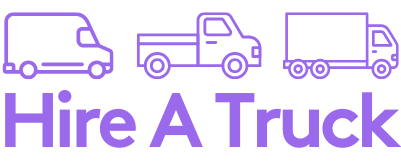When you’re managing materials on a busy job site, choosing the right truck for haulage can be the difference between smooth operations and costly delays. From moving gravel and bricks to delivering timber or removing waste, the right commercial vehicle improves productivity, reduces costs, and keeps your team safe.
In this guide, we break down the most suitable truck types for different haulage tasks — and how Hire a Truck makes it easy to get the vehicle you need, when and where you need it.
🧱 Why Your Haulage Vehicle Matters
Not all trucks are built for the same purpose. Choosing the wrong one can lead to:
- Overloading fines or damage
- Increased fuel costs and wasted trips
- Unsafe transport of building materials
- Project delays and budget blowouts
A fit-for-purpose vehicle saves time, protects your load, and boosts job-site efficiency.
🔧 Factors to Consider When Selecting a Truck
Before booking a vehicle, consider:
- Payload Requirement: What’s the total weight of materials you’re transporting? Always factor in the tare weight of your gear.
- Material Type: Is the load loose (e.g., soil), palletised (e.g., bricks), oversized (e.g., steel beams), or weather-sensitive?
- Site Access: Are roads narrow? Are there height or turning restrictions? Consider 4×4 options for soft ground.
- Unloading Method: Do you need a tail lift for pallets, a hydraulic tipper for bulk material, or crane access for a flatbed?
- Licence Class: Will your driver need a standard car licence (C), or a heavy vehicle licence (LR or MR)? For a detailed breakdown, see our section on GVM & Licence Classes.
🚚 Truck Types Available at Hire a Truck
1. 🛻 Utes (Single or Dual Cab)
Ideal for: Light equipment, tools, or last-minute supply runs.
- Payload: Typically around 1 tonne. Popular models like the Ford Ranger and Toyota Hilux often have payloads between 1000kg and 1200kg.
- Licence: Driveable with a standard car licence (Class C).
- Best for: Builders, electricians, plumbers, and small site jobs.
2. 🚛 Flatbed or Tray Trucks
Ideal for: Oversized loads like pipes, timber, or pallets.
- Payload: Varies significantly based on GVM. A common 4.2-metre tray truck that can be driven on a car licence has a payload of up to 2 tonnes. Larger trucks can handle much more.
- Features: A tray with dropside panels allows for easy loading and unloading with a forklift or by hand, while a traditional flatbed is a completely open platform. Both are ideal for crane access.
- Licence: A flatbed with a GVM of up to 4.5 tonnes can be driven on a standard car licence. Larger trucks will require an LR or MR licence.
3. 🏗 Tipper Trucks
Ideal for: Loose material like gravel, sand, soil, or waste.
- Payload: Typically 2–4 tonnes for smaller models.
- Features: The hydraulic tipping function allows for fast and efficient unloading, which is a massive time saver on a job site.
- Licence: Smaller 3-tonne tippers can be driven with a standard car licence (GVM up to 4.5 tonnes). Larger tippers with a GVM over 4.5 tonnes require an LR or MR licence.
4. 📦 Pantech / Box Trucks
Ideal for: Weather-sensitive materials, furniture removals, or site deliveries.
- Payload: A common Pantech truck that can be driven on a car licence has a GVM of up to 4.5 tonnes, with a payload of around 1.5–2.0 tonnes.
- Features: An enclosed body keeps cargo dry and secure. Most are equipped with a tail lift, making it easy to load and unload heavy items like pallets or machinery.
- Tail Lifts: There are several types, including column lifts (which lift heavy loads vertically) and tuck-away lifts (which fold away under the tray). Typical lifting capacities range from 500kg for smaller vans to 1,000kg or more for larger Pantechs.
⚖️ GVM & Licence Classes
Understanding the link between a truck’s Gross Vehicle Mass (GVM) and your driver’s licence is a critical legal requirement. GVM is the maximum legal weight of the truck plus its load.
| Licence Class | GVM (Gross Vehicle Mass) | Vehicles you can drive |
| C (Car) | Up to 4.5 tonnes | Utes, vans, light flatbeds, tippers, and Pantechs that do not exceed 4.5 tonnes. |
| LR (Light Rigid) | From 4.5 to 8 tonnes | Small buses or trucks with a GVM over 4.5 tonnes. |
| MR (Medium Rigid) | From 8 tonnes, with 2 axles | Larger delivery trucks and some rigid-body trucks. |
⚠️ Safety & Operational Best Practices
Proper truck operation goes beyond just driving. Here are some essential tips for tradies and site managers.
1. Load Restraint is Law
Under the national Chain of Responsibility (CoR) laws, every party involved (from the loader to the driver) is responsible for ensuring the load is secure. A breach of the primary duty can result in fines of over $424,000 for an individual and over $4.1 million for a corporation, with potential for imprisonment.
Your load must be restrained to withstand:
- 80% of its weight in a forward direction.
- 50% sideways and rearwards.
Always use appropriate restraints like chains for heavy machinery and ratchet straps for pallets. Use corner protectors to prevent straps from damaging loads and to ensure they don’t slip. For irregular-shaped loads, use dunnage or chocks to fill gaps and prevent movement. The NTC Load Restraint Guide is the official resource.
2. Safely Transporting Common Materials
- Timber/Long Beams: Use a flatbed or tray truck. Ensure the load is securely strapped down at multiple points and that there is a rigid headboard to prevent forward movement.
- Scaffolding: Transport scaffolding and other loose items in a tray with high sides or a caged flatbed. Securely bundle and strap down all components to prevent them from shifting or falling.
- Concrete Mixers/Machinery: Use a flatbed or dropside tray. Ensure the machinery is chained down to a rated anchor point and that the weight is distributed evenly to maintain stability.
3. Tail Lift Safety
- Check the Safe Working Load (SWL): This is clearly marked on the lift. Never exceed it.
- Clear the Area: Ensure no one is in the operating zone.
- Park Safely: Use the handbrake and, for longer use, switch off the engine to save fuel and battery power.
- Position the Load: Place the load on the centre of the platform. Never use it as a personnel lift.
4. Tipper Truck Safety on Site
- Level Ground: Only tip on level, firm, and stable ground to prevent the truck from toppling over.
- Check for Obstacles: Before raising the bed, check for overhead power lines, tree branches, and other obstructions.
- Use a Spotter: A spotter can guide the driver and ensure no one enters the exclusion zone.
- Even Distribution: Ensure the load is evenly distributed to prevent it from shifting and causing an imbalance during tipping.
🛠 Use Case Examples
| Scenario | Recommended Vehicle | Why it’s the best choice |
| Delivering a full pallet of bricks | Flatbed truck (4.5T GVM) | Easy to load with a forklift at the depot and unload with a crane or forklift on site. |
| Landscaping job with mulch and soil | 3T tipper truck | The hydraulic tipping function allows for quick and efficient dumping of loose material directly where it’s needed. |
| Site clean-up and rubbish removal | Enclosed box truck or tipper | A box truck keeps rubbish contained and secure, while a tipper is ideal for quick disposal of bulk waste. |
| Delivering frames and long timber | Tray truck with open sides | The open tray allows for long, oversized materials to be safely loaded and secured with tie-downs. |
| Moving a heavy generator or tools | Pantech truck with tail lift | The tail lift makes it simple and safe to load and unload heavy, awkward items without manual lifting. |
📝 Hiring a Commercial Vehicle: What to Expect
When you hire a truck, the process is straightforward, but it’s important to be prepared.
- Required Documentation: You will need a valid Australian driver’s licence and a credit card for the security bond. Ensure your licence is appropriate for the GVM of the vehicle you are hiring.
- Insurance: Standard insurance is typically included, but it comes with a high excess. You can usually purchase an excess reduction option to lower your out-of-pocket costs in case of an accident.
- Pre-start Inspection: Before you drive away, conduct a thorough inspection of the vehicle. Check the tyres, brakes, lights, fluid levels, and bodywork for any pre-existing damage. Note everything on the rental agreement to avoid being held liable for existing issues.
🚛 Why Rent from Hire a Truck?
Hire a Truck supports construction teams, tradies, and contractors with flexible, no-fuss commercial vehicle hire. Our benefits include:
- Short & long-term rental options: Perfect for a one-off job or a longer contract.
- No hidden fees: Transparent pricing with no lock-in leases.
- Well-maintained, late-model fleet: Our vehicles are reliable and regularly serviced.
- Locations across major Aussie cities: With branches in Brisbane, Gold Coast, Sydney, Melbourne, and other key regions, we’re always nearby.
- Licence-specific fleet: We offer trucks suitable for C, LR, and MR licence holders.
Need multiple vehicles? Ask us about fleet deals for your business.
✅ Summary
Whether you’re shifting gravel, timber, or pallets of cement, the right truck can keep your job running on time and under budget. A well-chosen commercial vehicle, backed by knowledge of safety and regulations, is a vital tool for any successful project.
Hire a Truck offers an extensive fleet of commercial vehicles to handle any haulage task — backed by reliable service, flexible terms, and no ownership headaches.
💼 Need help choosing the right truck for your site?
🔗 Contact our team or book online today.



